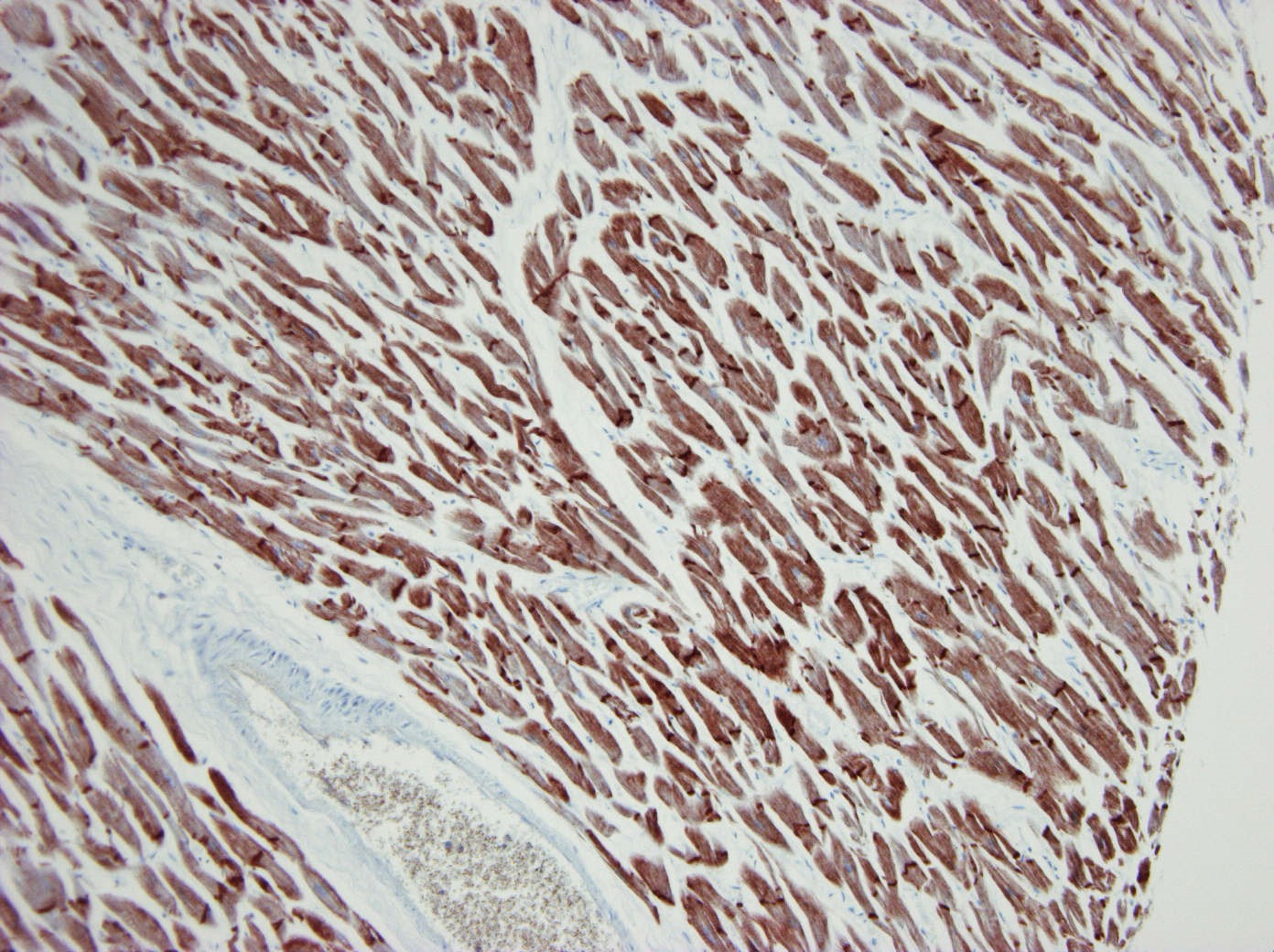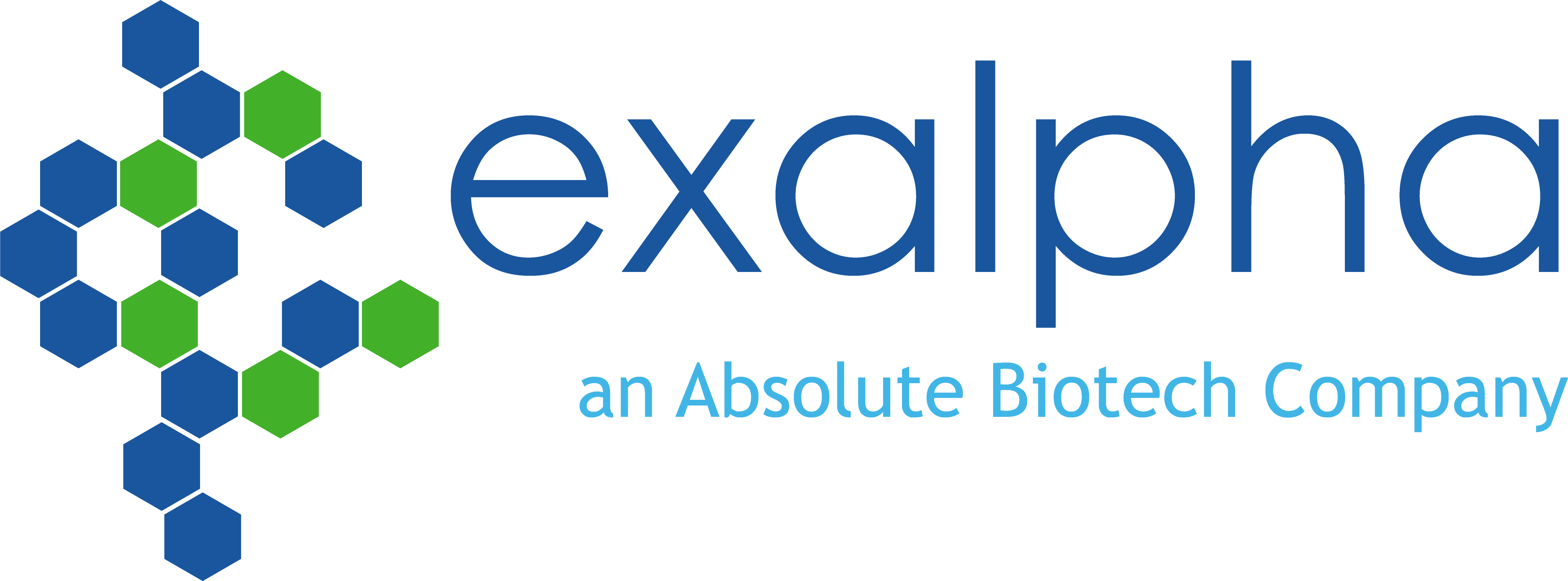Catalogue

Mouse anti actin alpha-cardiac
Catalog number: MUB0109P$402.00
Add To Cart| Clone | 22D3 |
| Isotype | IgG1 |
| Product Type |
Primary Antibodies |
| Units | 0.1 mg |
| Host | Mouse |
| Species Reactivity |
Caprine Human Rabbit Rat Swine Zebrafish |
| Application |
ELISA Immunohistochemistry (frozen) Immunohistochemistry (paraffin) Western Blotting |
Background
Among the six actin isoforms described in mammals, two are found in virtually all cells (β- and γ-cytoplasmic), two are detected in smooth muscle cells (α- and γ-smooth muscle) and two are present in striated muscles, one predominantly in skeletal (α-skeletal) and one in cardiac (α-cardiac) muscle cells. These actin isoforms differ slightly in their N-terminus, but the sequence of each of these actins is highly conserved in higher vertebRates. Cardiac α-actin, which is the main actin isoform in the adult heart, has also been shown to be the predominant form in early muscle development. In later development the expression of α-cardiac actin is down regulated and α-skeletal actin becomes the dominant isoform in the adult skeletal muscle.
Source
22D3 is a Mouse monoclonal IgG1 antibody derived by fusion of NS0 Mouse myeloma cells with spleen cells from a BALB/c Mouse immunized with a peptide comprising the N-terminal nonapeptide of α-cardiac actin with an acetylated N-terminus (Ac-DDEETTALVC-COOH) coupled to keyhole limpet hemocyanin through the cysteine residue.
Product
Each vial contains 100 ul 1 mg/ml purified monoclonal antibody in PBS containing 0.09% sodium azide.
Specificity
Clone 22D3 is an antibody highly specific for a- cardiac actin, and does not cross react with other actin isoforms.
Species Reactivity: The epitope recognized by MUB0109P is highly conserved. The antibody therefore cross-reacts with many species
Applications
22D3 is useful for immunohistochemistry on frozen and paraffin-embedded tissues, immunoblotting and ELISA. Optimal antibody dilutions should be determined by titration; recommended range is 1:100 – 1:1000 for immunohistochemistry with avidin-biotinylated Horseradish peroxidase complex (ABC) as detection reagent, and 1:1000 – 1:5000 for immunoblotting applications.
Storage
The antibody is shipped at ambient temperature and may be stored at +4°C. For prolonged storage prepare appropriate aliquots and store at or below -20°C. Prior to use, an aliquot is thawed slowly in the dark at ambient temperature, spun down again and used to prepare working dilutions by adding sterile phosphate buffered saline (PBS, pH 7.2). Repeated thawing and freezing should be avoided. Working dilutions should be stored at +4°C, not refrozen, and preferably used the same day. If a slight precipitation occurs upon storage, this should be removed by centrifugation. It will not affect the performance or the concentration of the product.
Caution
This product is intended FOR RESEARCH USE ONLY, and FOR TESTS IN VITRO, not for use in diagnostic or therapeutic procedures involving humans or animals. It may contain hazardous ingredients. Please refer to the Safety Data Sheets (SDS) for additional information and proper handling procedures. Dispose product remainders according to local regulations.This datasheet is as accurate as reasonably achievable, but our company accepts no liability for any inaccuracies or omissions in this information.
References
1. Vandekerckhove, J. and Weber, K. (1978). At least six different actins are expressed in a higher mammal: an analysis based on the amino acid sequence of the amino-terminal tryptic peptide. J Mol Biol. 126(4), 783-802.
2. Vandekerckhove, J., Bugaisky, G. and Buckingham, M. (1986). Simultaneous expression of skeletal muscle and heart actin proteins in various striated muscle tissues and cells. J Biol Chem. 261(4),1838-43.
3. Suurmeijer, A.J., Clément, S., Francesconi, A., Bocchi, L., Angelini, A., Van Veldhuisen, D.J., Spagnoli, L.G., Gabbiani, G. and Orlandi, A. (2003). Alpha-actin isoform distribution in normal and failing Human heart: a morphological, morphometric, and biochemical study. J Pathol. 199(3), 387-97.
4. Chaponnier, C. and Gabbiani, G. (2004). Pathological situations characterized by altered actin isoform expression. J Pathol. 204(4), 386-95.
5. Driesen, R.B., Verheyen F.K., Debie, W., Blaauw, E., Babiker, F.A., Cornelussen, R.N., Ausma, J., Lenders, M.H., Borgers, M., Chaponnier, C. and Ramaekers, F.C. (2009). Re-expression of alpha skeletal actin as a marker for dedifferentiation in cardiac pathologies. J Cell Mol Med 13(5), 896-908.
Protein Reference(s)
Database Name: UniProt
Accession Number: P68032
Safety Datasheet(s) for this product:
| EA_Sodium Azide |

|
Figure 1. Formalin fixed, paraffin embedded human heart tissue immunostained for alpha cardiac actin using MUB0109P (clone 22D3) at a 500x dilution. Note the strong staining of cardiac muscle tissue. |

Figure 1. Formalin fixed, paraffin embedded human heart tissue immunostained for alpha cardiac actin using MUB0109P (clone 22D3) at a 500x dilution. Note the strong staining of cardiac muscle tissue.
